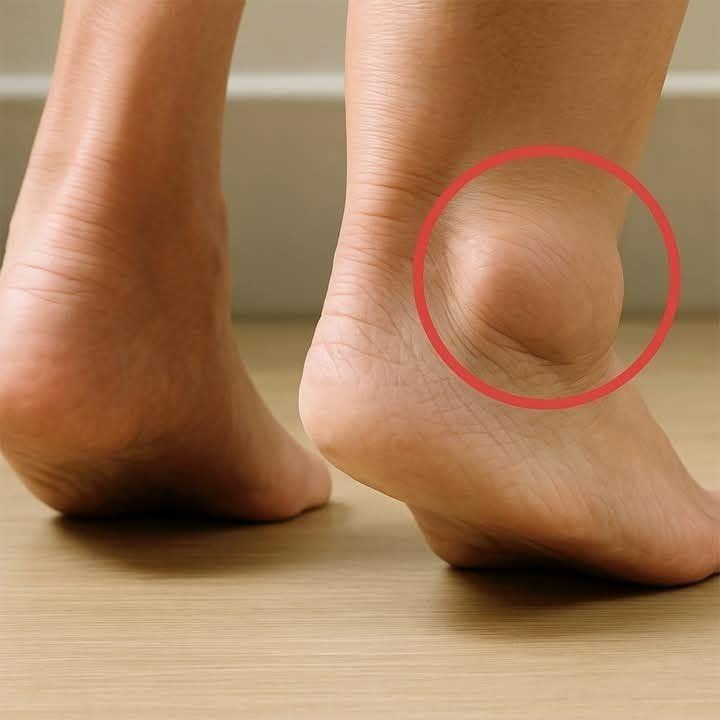Most of us have experienced it: after a long day on our feet, a salty meal, or a hot summer afternoon, our legs and ankles feel heavy and look puffy. While occasional swelling is common and usually harmless, sometimes it can be a sign of an underlying medical issue.
This guide will help you understand why swelling happens, when it’s a red flag, and the best natural relief methods you can use right at home.
Why Legs and Feet Swell
Swelling in the lower body is often caused by fluid buildup, also known as edema. Gravity naturally pulls fluids downward, especially when we sit or stand still for long periods. But there are several other common reasons:
-
Prolonged standing or sitting – Long flights, car rides, or desk jobs allow fluid to pool in the legs.
-
High sodium diet – Too much salt makes your body retain water.
-
Hormonal changes – PMS, pregnancy, or menopause can all cause fluid shifts.
-
Hot weather – Heat dilates blood vessels, increasing leakage into tissues.
-
Aging – Veins weaken with age, slowing circulation and causing puffiness.
💡 Mild swelling after travel or a salty meal often resolves with hydration, rest, and movement.
When Swelling Could Be Serious
Most swelling isn’t dangerous. But sometimes, it signals a medical condition that needs professional treatment. Call your healthcare provider if you notice:
1. Swelling in Only One Leg
-
Could be Deep Vein Thrombosis (DVT) — a blood clot in the leg.
-
Symptoms: pain, redness, warmth, and swelling on one side.
🚨 DVT can be life-threatening if the clot travels to the lungs. Seek immediate care.
2. Sudden or Severe Swelling
-
May indicate heart failure, kidney disease, or liver issues.
-
Especially concerning if it develops quickly.
3. Shortness of Breath + Swelling
-
Can signal heart failure. If you experience both, go to the ER.
4. Swelling That Leaves a Pit (Pitting Edema)
-
Press a finger into the skin — if it leaves a dent, that’s a sign of significant fluid retention.
5. Swelling With Fatigue or Foamy Urine
-
Could be linked to kidney problems, especially if you also have high blood pressure.
✅ Rule of thumb: If swelling is persistent, painful, or paired with other symptoms, don’t ignore it.
Natural Relief Methods That Really Work
If your swelling is mild and occasional, these simple strategies can help reduce puffiness and improve circulation:
1. Elevate Your Legs
Lie down and prop your legs above heart level for 15–30 minutes, two to three times a day. Gravity will help fluids return toward the heart.
🛋️ Great to do after a long day at work or right before bedtime.
2. Stay Hydrated
It sounds counterintuitive, but drinking more water reduces swelling. When you’re dehydrated, your body holds onto fluid.
✅ Aim for 6–8 glasses daily — more if you’re active or in hot weather.
3. Reduce Salt Intake
Salt is one of the biggest culprits in water retention.
-
Avoid processed foods, canned soups, chips, and fast food.
-
Flavor meals with lemon, garlic, vinegar, or fresh herbs instead.
📊 The American Heart Association recommends no more than 2,300 mg/day of sodium, ideally 1,500 mg/day for at-risk individuals.
4. Keep Moving
Movement acts as a natural pump for your veins and lymphatic system.
-
Try walking, stretching, or ankle pumps if you sit for long hours.
-
On flights or long drives, stand up and walk every hour.
5. Wear Compression Socks
These snug-fitting socks gently squeeze the legs to prevent fluid from pooling.
✅ Great for pregnancy, travel, or jobs that require standing all day.
👉 Choose mild to moderate compression (15–20 mmHg) unless your doctor prescribes a stronger level.
6. Try a Soothing Foot Bath
Soak your feet in cool water with Epsom salts (magnesium sulfate) to relax muscles and reduce puffiness.
⚠️ Not recommended if you have diabetes or poor circulation without your doctor’s approval.
7. Eat Natural Diuretic Foods
Certain foods help your body flush excess fluids naturally:
-
Cucumbers
-
Celery
-
Asparagus
-
Parsley
-
Lemon water
These foods support kidney function and reduce swelling without the risks of harsh water pills.
What NOT to Do
-
❌ Don’t take over-the-counter “water pills” without medical advice. They can cause dangerous electrolyte imbalances.
-
❌ Don’t ignore one-sided swelling — it could be a clot.
-
❌ Don’t stand or sit for hours without breaks.
-
❌ Don’t wear overly tight shoes or socks that restrict circulation.
The Bigger Picture: Protecting Your Circulation
Swelling is often a lifestyle issue, but it can also be a warning sign of serious conditions. Just as you would protect your credit, mortgage, or insurance policy, it’s wise to protect your circulatory health with preventive care:
-
Get regular check-ups.
-
Monitor blood pressure and kidney function.
-
Invest in preventive treatment and recovery plans if you’re at risk.
-
Support local health charities or even donate to organizations that provide care for people with vascular conditions.
Final Thoughts
Swollen legs and feet don’t always mean something’s wrong. Sometimes, they’re simply your body’s way of saying: “I need rest and balance.”
But your body also knows when something’s off. If swelling appears suddenly, is painful, or comes with other symptoms like chest pain or shortness of breath, don’t wait — seek help.
Because real health isn’t about ignoring signals.
It’s about listening, elevating, hydrating, and moving — one mindful step at a time.
And if you’re ever unsure? Talk to your doctor. Your health deserves nothing less.
💙


